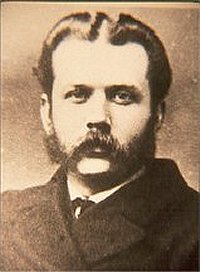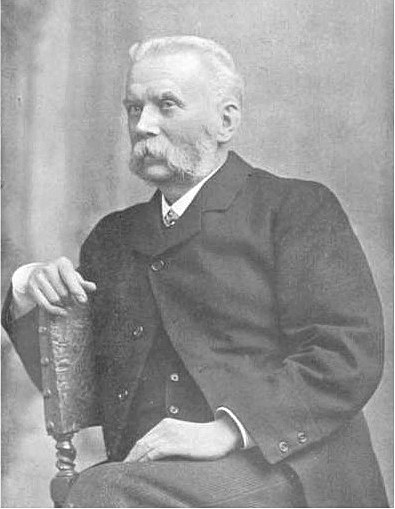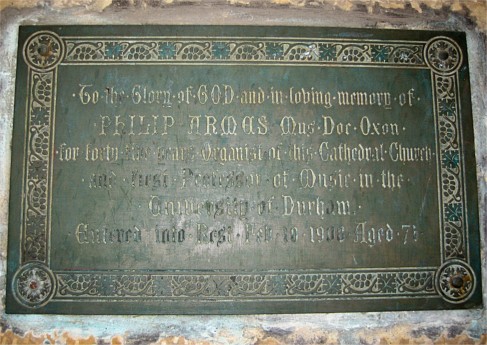Philip
Armes (b.1836, d.1908)
[article written for summer
recital Programme 2008]
2008 sees the
centenary of the demise of Philip Armes, good
reason to share information about
the organist of Durham Cathedral for 45 years,
1862 to 1907 - through much of Queen Victoria’s
reign.
Armes
was born in Norwich, eldest son (one of seven
children) of Philip Armes, a schoolmaster and
bass singer and his wife, Mary, and began his
musical career as a chorister in the cathedral
as a pupil of the celebrated Zechariah
Buck. On the appointment of his father as
bass lay clerk at Rochester Cathedral the
family moved there in 1848, and young Philip
became a successful solo singer in the choir
(singing on one occasion for Jennie
Lind), and receiving a Broadwood grand
piano as a present on leaving the choir. He
then studied the organ with and acted as
J.L.Hopkins’s assistant at Rochester, as well
becoming organist at Trinity
Church,
Milton, Gravesend. In 1857 Armes moved
to St. Andrew's, Wells Street in London, and
in 1861 to Chichester Cathedral, before soon
moving north, succeeding William
Henshaw as organist of Durham Cathedral
in 1862 at a salary of £260.

He had graduated
BMus at Oxford in 1858, and the same degree
ad eundem
at Durham in 1863. He proceeded to DMus at
Oxford in 1864 and at Durham ad eundem
in 1874. Armes drew up the first scheme
and became examiner for Durham’s external
degrees in music introduced in 1890, was an
Oxford examiner from 1894, and in 1897 was
appointed Durham University’s first Professor of
Music.
Armes
was also a string player – by choice, the viola.
He composed three oratorios, various anthems, services
and other church music, and the madrigal, Victoria, that
gained the Madrigal
Society's first prize in 1897.
Soon after arriving in
Durham, in January 1864, Armes married Emily Jane
Davison, six years his junior, daughter of the chief
justice of the supreme court
of Madras. The Armes subsequently had two sons [Augustus
and Algernon] and
two daughters [Emily and Alice] – the family with up to
4 servants is to be found
in the Census records for Durham living first at No.20
and later No.17,
North Bailey. Included in the occupation entries are
“Captain of Volunteers” [1881]
and “Retired Major 4th
V.B.
Durham” [1901].
Thomas
Collinson’s Diary contains many mentions of
Armes’s roles (not least in dismantling and dispersing
the old Smith organ, and acquiring the Willis
organ in 1876, and his territorial army
activities], the musical, Cathedral and city life when
Collinson was an "organist's apprentice” at Durham
1871-75. In an article written 60 years later, he also
recalled his master:-
"...Apprenticeship to
the sound musician and contrapuntist, Dr.Armes brought
me into touch with the Father Smith organ of the
Cathedral, amended "up-to-date" by one Postil [sic! ]
of York. My fellow pupils shared with me the
wonder felt for the Doctor's handiness and impetuosity
in playing this instrument. If, as sometimes
happened, the tumbler coupler, Swell to Great, got out
of gear and caused trouble, he would accompany the
choir with one hand, while undoing the front boards
with the other, to push into place some erring
sticker. His impetuosity shewed itself on the
occasion of a rebellious stop-handle refusing to go
"in", by his planting his back against the Choir organ
panel behind the stool and booting the unfortunate
stop in with the full thrust of his right leg. This
was quite effective and the Principal humbly became
dumb to order……The lack of a 16ft stop on the Great
organ seemed to be atoned for by the old fashioned
ponderousness of Dr.Armes' playing; he was really
great at "filling up" his harmonies, and was a
Handelian player of the first water..."

Shortly after the rebuilding
of
the Willis organ by Harrison & Harrison in
1904/5, Chapter requested the Dean to confer with the
organist as to his retirement, and the SubDean was
desired to consult the Precentor as to “the present
grave condition of things musical”. It was
agreed and Armes retired 2 years later in May 1907 on
a pension of £250 pa. He died the following
year, at home on 10 February 1908, and was buried in
the cemetery of St
Mary-le-Bow,
Durham. A memorial is to be found in the
Cathedral west cloister.

© Richard Hird [2008]
Pictures courtesy the Web.
Return
to
top
|